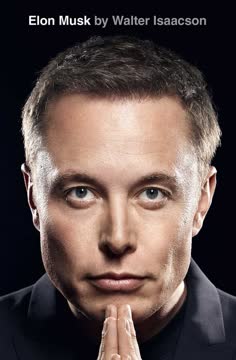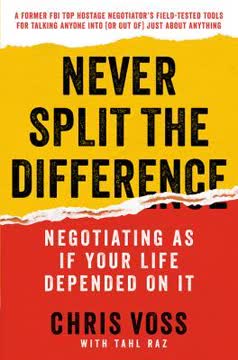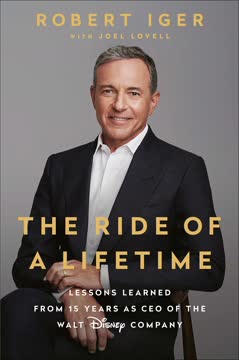Key Takeaways
1. Pursuit of a Crazy Idea: The Birth of Nike
If you have a body, you are an athlete.
A passion for running led Phil Knight to pursue his "Crazy Idea" of importing Japanese running shoes to the United States. After graduating from Stanford, Knight traveled the world, including a stop in Japan where he secured a distribution agreement with Onitsuka Co. for their Tiger shoes.
Founding Blue Ribbon Sports: In 1964, Knight partnered with his former track coach, Bill Bowerman, to create Blue Ribbon Sports, the precursor to Nike. They started by selling Tiger shoes from the trunk of Knight's car at track meets.
Early challenges:
- Limited capital and inventory
- Balancing shoe sales with a full-time job as an accountant
- Maintaining a relationship with Onitsuka while developing their own brand
As the company grew, Knight and Bowerman faced numerous obstacles but remained committed to their vision of creating high-quality, innovative athletic footwear.
2. Overcoming Financial Struggles and Building Relationships
There is an immense amount of satisfaction in building good things that last.
Constant cash flow issues plagued Blue Ribbon Sports in its early years. Knight repeatedly found himself scraping together funds to pay for inventory and keep the business afloat.
Key relationships that helped sustain the company:
- Bill Bowerman: Provided credibility and innovative shoe designs
- Jeff Johnson: First full-time employee, dedicated to sales and customer service
- Nissho Iwai: Japanese trading company that provided crucial financing
Creative problem-solving: Knight often had to think outside the box to overcome financial hurdles. This included:
- Taking on personal debt
- Negotiating extended payment terms with suppliers
- Leveraging relationships with banks and investors
Despite the constant financial pressure, Knight's determination and ability to build strong partnerships kept the company moving forward.
3. Innovation and Quality Drive Growth
Don't tell people how to do things, tell them what to do and let them surprise you with their results.
Bowerman's innovations were crucial to Nike's success. His obsession with creating better running shoes led to groundbreaking designs, including:
- The Cortez: A revolutionary running shoe with full-length cushioning
- The Waffle Trainer: Inspired by Bowerman's waffle iron, it provided superior traction
Quality focus: Knight emphasized the importance of producing high-quality shoes, even as the company rapidly expanded production to meet growing demand.
Continuous improvement: Nike's culture of innovation extended beyond shoe design to include:
- Manufacturing processes
- Materials research
- Athlete feedback and testing
This commitment to innovation and quality helped Nike differentiate itself in a competitive market and build a loyal customer base.
4. Expanding Beyond Shoes: Apparel and Athlete Endorsements
I wanted to build something that was my own, something I could point to and say: I made that. It was the only way I saw to make life meaningful.
Diversification into apparel was a strategic move to compete with larger rivals like Adidas. Though initially challenging, Nike's expansion into clothing and accessories helped solidify its position as a comprehensive sports brand.
Athlete endorsements became a cornerstone of Nike's marketing strategy:
- Steve Prefontaine: One of the first athletes to officially endorse Nike
- John McEnroe: Helped establish Nike in the tennis market
- Michael Jordan: Perhaps the most iconic Nike endorsement, revolutionizing athlete partnerships
College team sponsorships: Nike aggressively pursued deals with college athletic programs, helping to build brand loyalty among young athletes and fans.
These expansions beyond footwear helped Nike become a dominant force in the sports industry, creating a lifestyle brand that resonated with both athletes and casual consumers.
5. Navigating Legal Battles and Government Regulations
You are remembered for the rules you break.
Onitsuka lawsuit: When Onitsuka attempted to terminate their partnership, Nike fought back in court, ultimately winning the right to continue selling their own branded shoes.
Customs battle: Nike faced a $25 million bill from U.S. Customs due to an arcane law called the American Selling Price. Key aspects of this fight included:
- Lobbying efforts in Washington, D.C.
- A public relations campaign highlighting Nike as a small company fighting big government
- An antitrust lawsuit against competitors
Creative solutions: To combat the customs issue, Nike:
- Manufactured a low-cost shoe in the U.S. to establish a new price point for import duties
- Filed a lawsuit against competitors and the government
- Negotiated a settlement for $9 million, far less than the original demand
These legal and regulatory challenges taught Nike to be resourceful and aggressive in protecting its interests.
6. The Importance of Company Culture and Team Dynamics
Beating the competition is relatively easy. Beating yourself is a never-ending commitment.
The "Buttface" meetings: These biannual retreats brought together Nike's core team to discuss strategy, solve problems, and build camaraderie. Key aspects included:
- Open and honest communication, often with harsh criticism
- A focus on problem-solving and innovation
- Building trust and loyalty among team members
Hiring philosophy: Knight often hired accountants and lawyers, valuing their analytical skills and ability to learn quickly. He also prioritized loyalty and cultural fit over industry experience.
Empowering employees: Knight's management style involved:
- Giving team members significant autonomy
- Encouraging creative problem-solving
- Fostering a sense of ownership in the company's success
This unique culture helped Nike attract and retain talented individuals who were passionate about the company's mission.
7. Going Public: Balancing Growth and Control
There is an art to maximizing growth without bankrupting your company.
The decision to go public was driven by the need for capital to fuel Nike's rapid growth. However, Knight was concerned about losing control of the company he had built.
Innovative stock structure: To maintain control while accessing public markets, Nike implemented a dual-class stock structure:
- Class A shares: Held by founders and key employees, with greater voting rights
- Class B shares: Offered to the public, with limited voting rights
Timing the IPO: Knight recognized the importance of timing the public offering:
- Waited until resolving major legal and regulatory issues
- Aimed to go public before an anticipated economic recession
This approach allowed Nike to raise significant capital while preserving its core culture and decision-making power.
8. Global Expansion and Entering the Chinese Market
If you have a body, you are an athlete.
Diversifying production: As costs rose in Japan, Nike expanded manufacturing to:
- Taiwan
- South Korea
- United States (New England and Puerto Rico)
China strategy: Recognizing the potential of the Chinese market, Nike:
- Hired David Chang, an expert in Chinese business relations
- Prepared an extensive presentation for the Chinese government
- Received an invitation for an official visit to China
Long-term vision: Knight saw China not just as a manufacturing hub but as a massive potential market for Nike products.
This global expansion strategy helped Nike reduce production costs, mitigate supply chain risks, and position itself for future growth in emerging markets.
9. The Power of Perseverance in Entrepreneurship
Don't stop. Don't even think about stopping until you get there, and don't give much thought to where 'there' is. Whatever comes, just don't stop.
Overcoming setbacks: Throughout Nike's history, Knight and his team faced numerous challenges:
- Financial crises and cash flow issues
- Legal battles and regulatory hurdles
- Production and quality control problems
Maintaining focus: Despite these obstacles, Knight remained committed to his vision for Nike, often working long hours and making personal sacrifices.
Learning from failure: Knight embraced failures as learning opportunities, such as:
- The Tailwind shoe recall, which led to improved product testing
- Early marketing missteps, which informed future advertising strategies
This relentless perseverance in the face of adversity was a key factor in Nike's ultimate success, transforming it from a small import business to a global sportswear giant.
Last updated:
FAQ
What's Shoe Dog: A Memoir by the Creator of Nike about?
- Phil Knight's Journey: The memoir details Phil Knight's transformation from a young entrepreneur with a "Crazy Idea" to the co-founder of Nike, highlighting the challenges and successes he encountered.
- Founding Nike: It covers the inception of Blue Ribbon Sports, which evolved into Nike, and the company's growth amidst financial struggles and competition.
- Personal Reflections: Knight shares personal stories about his family, friends, and mentors, offering insights into his character and the relationships that influenced his life and business.
Why should I read Shoe Dog?
- Inspiring Entrepreneurial Story: The book provides an inspiring narrative of entrepreneurship, illustrating the determination needed to build a successful business from the ground up.
- Authentic Insights: Knight offers candid reflections on the realities of running a business, including failures and the importance of perseverance.
- Cultural Context: It gives readers a glimpse into the cultural and economic landscape of the 1960s and 70s, enriching the narrative with historical context.
What are the key takeaways of Shoe Dog?
- Embrace Uncertainty: Knight emphasizes that uncertainty is inherent in entrepreneurship, stating, "Life is growth. You grow or you die."
- Value of Relationships: Building strong relationships with partners, employees, and mentors is crucial, as demonstrated by Knight's collaborations with Bowerman and Johnson.
- Persistence is Key: Knight's journey shows that persistence and resilience are essential for overcoming obstacles, as he faced rejection and doubt but continued to push forward.
What are the best quotes from Shoe Dog and what do they mean?
- "In the beginner’s mind...": This quote by Shunryu Suzuki underscores the importance of maintaining an open and curious mindset, especially when starting something new.
- "The cowards never started...": Reflects Knight's belief in the pioneer spirit and the necessity of courage and strength in the face of adversity.
- "Let everyone else call...": Encapsulates Knight's determination to pursue his vision despite skepticism, reinforcing the idea that belief in oneself is essential.
How did Phil Knight come up with the idea for Nike?
- Stanford Seminar Inspiration: Knight's "Crazy Idea" originated from a seminar on entrepreneurship at Stanford, where he wrote a paper about Japanese running shoes.
- Market Observation: He noticed the success of Japanese products in other markets and believed Japanese running shoes could similarly disrupt the American market.
- Personal Passion: As a runner, Knight's passion for the sport fueled his desire to create a better product for athletes, leading to the founding of Blue Ribbon Sports.
What challenges did Phil Knight face while building Nike?
- Financial Struggles: Knight faced significant financial challenges, including cash flow issues and the constant need for loans to keep the business afloat.
- Competition: He dealt with fierce competition from established brands like Adidas and Puma, making it difficult to gain market share.
- Supply Chain Issues: Knight often encountered delays and problems with shipments from Onitsuka, complicating his ability to meet customer demand.
How did Phil Knight's relationship with Bowerman influence Nike's success?
- Mentorship and Guidance: Bowerman served as a mentor to Knight, providing invaluable advice and support throughout the early years of the company.
- Innovative Designs: Bowerman's obsession with creating better running shoes led to innovative designs foundational to Nike's product line, such as the Cortez.
- Credibility and Reputation: Bowerman's status as a legendary coach lent credibility to Blue Ribbon Sports, helping attract customers and build brand recognition.
What role did Johnson play in the growth of Nike?
- Sales Strategy: Johnson was instrumental in developing a sales strategy focused on building relationships with customers and promoting the brand through grassroots efforts.
- Expansion: He helped expand Blue Ribbon's reach by opening the first retail store in Santa Monica, which became a model for future locations.
- Customer Engagement: Johnson's dedication to customer service and engagement fostered a loyal customer base, crucial for the brand's early success.
How did Phil Knight handle setbacks and failures?
- Resilience: Knight demonstrated resilience by learning from his failures and using them as stepping stones for future success, stating, "You grow or you die."
- Adaptability: He adapted his strategies based on market feedback and changing circumstances, showing a willingness to pivot when necessary.
- Support System: Knight relied on his relationships with partners, employees, and mentors to navigate tough times, emphasizing the importance of a strong support network.
How did Phil Knight's relationship with athletes influence Nike?
- Steve Prefontaine's Impact: Prefontaine, a legendary runner, played a pivotal role in shaping Nike's identity, inspiring the brand and its mission.
- Endorsements and Loyalty: Athlete endorsements were crucial in building Nike's reputation, as having top athletes wear Nike products helped establish credibility.
- Cultural Connection: Relationships with athletes created a cultural connection between Nike and the running community, fostering loyalty and turning Nike into a symbol of athletic excellence.
What role did Frank Rudy play in Nike's innovation?
- Air Sole Technology: Frank Rudy introduced the concept of air soles, revolutionizing the running shoe market with greater cushioning and support.
- Collaboration with Nike: Rudy's partnership with Nike led to the development of the Air Max line, iconic in the athletic shoe industry.
- Enduring Legacy: Rudy's contributions have had a lasting impact on the industry, influencing how running shoes are designed and marketed.
What is the significance of the title Shoe Dog?
- Passion for Shoes: "Shoe dog" refers to someone deeply passionate about shoes and the shoe industry, reflecting Knight's dedication to athletic footwear.
- Community of Enthusiasts: The title signifies a community of like-minded individuals who share a love for shoes, running, and sports.
- Personal Connection: For Knight, being a "shoe dog" represents his journey, struggles, and triumphs in building Nike from the ground up.
Review Summary
Shoe Dog receives mostly positive reviews for its captivating storytelling and insights into Nike's early struggles. Readers appreciate Knight's candid account of building the company, his perseverance through challenges, and the book's inspirational qualities. Many found it difficult to put down, praising Knight's writing style and the book's pacing. Some criticism focuses on Knight's perceived lack of self-awareness and treatment of employees. Overall, reviewers recommend it for entrepreneurs, sports fans, and those interested in business memoirs.
Similar Books








Download PDF
Download EPUB
.epub digital book format is ideal for reading ebooks on phones, tablets, and e-readers.





